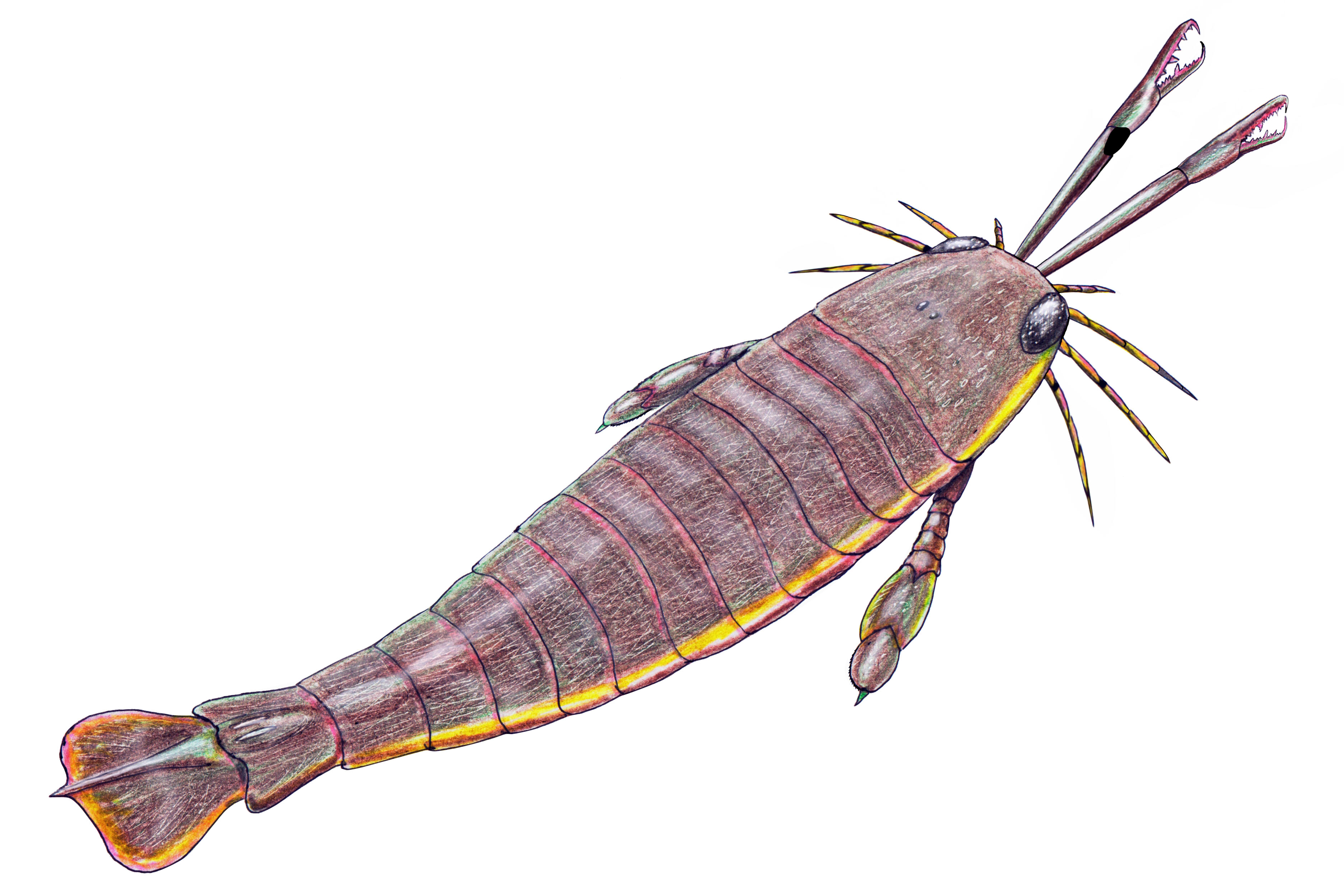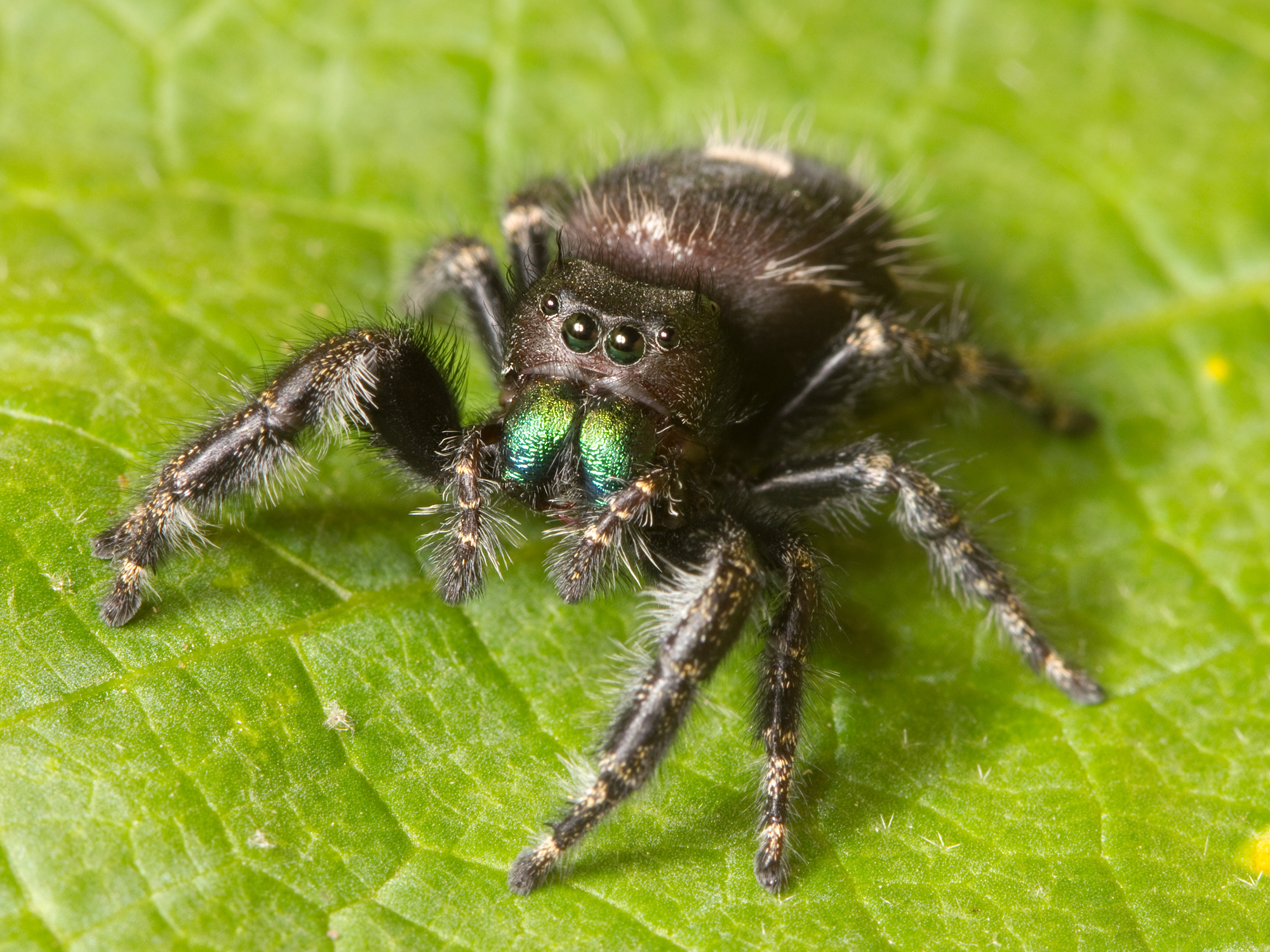|
Necrogammarus
''Necrogammarus salweyi'' is the binomial name applied to an arthropod fossil discovered in Herefordshire, England. The fossil represents a fragmentary section of the underside and an appendage of a pterygotid eurypterid, a group of large and predatory aquatic arthropods that lived from the late Silurian to the late Devonian. The ''Necrogammarus'' fossil is Late Silurian in age and its generic name means "dead lobster", deriving from Ancient Greek νεκρός (''nekrós'', “dead body”) and Latin ''gammarus'' ("lobster"). Historically classified as either a millipede or a crustacean (hence the name) and once considered to potentially represent the oldest myriapod in the fossil record, ''Necrogammarus'' was first revealed to represent a fragmentary section of a large pterygotid eurypterid in 1986 by the researcher Paul Selden. As two large pterygotids are already known from the same locality and same timespan as ''Necrogammarus'', ''Erettopterus'' and ''Pterygotus'', it is pos ... [...More Info...] [...Related Items...] OR: [Wikipedia] [Google] [Baidu] |
Pterygotidae
Pterygotidae (the name deriving from the type genus '' Pterygotus'', meaning "winged one") is a family of eurypterids, an extinct group of aquatic arthropods. They were members of the superfamily Pterygotioidea. Pterygotids were the largest known arthropods to have ever lived with some members of the family, such as '' Jaekelopterus'' and '' Acutiramus'', exceeding 2 metres (6.6 ft) in length. Their fossilized remains have been recovered in deposits ranging in age from 428 to 372 million years old ( Late Silurian to Late Devonian). One of the most successful groups of eurypterids, the pterygotids were the only eurypterid family to achieve a truly worldwide distribution. Several evolutionary innovations made the pterygotids unique among the eurypterids, with large and flattened telsons (the posteriormost division of the body) likely used as rudders to provide additional agility and enlarged chelicerae (frontal appendages) with claws. These claws were robust and possessed ... [...More Info...] [...Related Items...] OR: [Wikipedia] [Google] [Baidu] |
Late Silurian
The Silurian ( ) is a geologic period and system spanning 24.6 million years from the end of the Ordovician Period, at million years ago (Mya), to the beginning of the Devonian Period, Mya. The Silurian is the shortest period of the Paleozoic Era. As with other geologic periods, the rock beds that define the period's start and end are well identified, but the exact dates are uncertain by a few million years. The base of the Silurian is set at a series of major Ordovician–Silurian extinction events when up to 60% of marine genera were wiped out. One important event in this period was the initial establishment of terrestrial life in what is known as the Silurian-Devonian Terrestrial Revolution: vascular plants emerged from more primitive land plants, dikaryan fungi started expanding and diversifying along with glomeromycotan fungi, and three groups of arthropods (myriapods, arachnids and hexapods) became fully terrestrialized. A significant evolutionary milestone duri ... [...More Info...] [...Related Items...] OR: [Wikipedia] [Google] [Baidu] |
Chelicerae
The chelicerae () are the mouthparts of the subphylum Chelicerata, an arthropod group that includes arachnids, horseshoe crabs, and sea spiders. Commonly referred to as " jaws", chelicerae may be shaped as either articulated fangs, or similarly to pincers. Some chelicerae, such as those found on nearly all spiders, are hollow and contain (or are connected to) venom glands, and are used to inject venom into prey or a perceived threat. In '' Pisaurina mira'', also known as the nursery web spider, the chelicerae are utilized to snatch the prey once it becomes within reach, facilitating the "sit-and-wait ambush predator" behavior. Both pseudoscorpions and harvestmen have structures on their chelicerae that are used for grooming (papillae in pseudoscorpions, cheliceral teeth in Opiliones). Types Chelicerae can be divided into three kinds: jackknife chelicerae, scissor chelicerae, and 3-segmented chelate chelicerae. Jackknife chelicerae The jackknife chelicera is subchelate ... [...More Info...] [...Related Items...] OR: [Wikipedia] [Google] [Baidu] |
Diplosegments
Millipedes are a group of arthropods that are characterised by having two pairs of jointed legs on most body segments; they are known scientifically as the class Diplopoda, the name derived from this feature. Each double-legged segment is a result of two single segments fused together. Most millipedes have very elongated cylindrical or flattened bodies with more than 20 segments, while pill millipedes are shorter and can roll into a tight ball. Although the name "millipede" derives from the Latin for "thousand feet", no species was known to have 1,000 or more until the discovery of '' Eumillipes persephone'', which can have over 1,300 legs. There are approximately 12,000 named species classified into 16 orders and around 140 families, making Diplopoda the largest class of myriapods, an arthropod group which also includes centipedes and other multi-legged creatures. Most millipedes are slow-moving detritivores, eating decaying leaves and other dead plant matter. Some eat ... [...More Info...] [...Related Items...] OR: [Wikipedia] [Google] [Baidu] |
Amphipoda
Amphipoda is an order of malacostracan crustaceans with no carapace and generally with laterally compressed bodies. Amphipods range in size from and are mostly detritivores or scavengers. There are more than 9,900 amphipod species so far described. They are mostly marine animals, but are found in almost all aquatic environments. Some 1,900 species live in fresh water, and the order also includes the terrestrial sandhoppers such as '' Talitrus saltator''. Etymology and names The name ''Amphipoda'' comes, via New Latin ', from the Greek roots 'on both/all sides' and 'foot'. This contrasts with the related Isopoda, which have a single kind of thoracic leg. Particularly among anglers, amphipods are known as ''freshwater shrimp'', ''scuds'', or ''sideswimmers''. Description Anatomy The body of an amphipod is divided into 13 segments, which can be grouped into a head, a thorax and an abdomen. The head is fused to the thorax, and bears two pairs of antennae and one pair of ... [...More Info...] [...Related Items...] OR: [Wikipedia] [Google] [Baidu] |
Henry Woodward (geologist)
Henry Bolingbroke Woodward (24 November 1832 – 6 September 1921) was an English geologist and paleontologist known for his research on fossil crustaceans and other arthropods. Woodward was born Norwich, England on 24 November 1832 and was educated at Norwich School. He became assistant in the geological department of the British Museum in 1858, and in 1880 keeper of that department. He became Fellow of the Royal Society in 1873, LL.D (St Andrews) in 1878, president of the Geological Society of London (1894–1896). He was awarded the Murchison Medal in 1884 and Wollaston Medal in 1906. Woodward was president of the Geologists' Association for the years 1873 and 1874, president of the Malacological Society in 1893–1895, president of the Museums Association for the year 1900, and president of the Palaeontographical Society from 1895 (upon the death of incumbent president T. H. Huxley) to his own death in 1921. He published a ''Monograph of the British Fossil Crustace ... [...More Info...] [...Related Items...] OR: [Wikipedia] [Google] [Baidu] |
Thomas Henry Huxley
Thomas Henry Huxley (4 May 1825 – 29 June 1895) was an English biologist and anthropologist specialising in comparative anatomy. He has become known as "Darwin's Bulldog" for his advocacy of Charles Darwin's theory of evolution. The stories regarding Huxley's famous 1860 Oxford evolution debate with Samuel Wilberforce were a key moment in the wider acceptance of evolution and in his own career, although some historians think that the surviving story of the debate is a later fabrication. Huxley had been planning to leave Oxford on the previous day, but, after an encounter with Robert Chambers, the author of '' Vestiges'', he changed his mind and decided to join the debate. Wilberforce was coached by Richard Owen, against whom Huxley also debated about whether humans were closely related to apes. Huxley was slow to accept some of Darwin's ideas, such as gradualism, and was undecided about natural selection, but despite this he was wholehearted in his public support of D ... [...More Info...] [...Related Items...] OR: [Wikipedia] [Google] [Baidu] |
John William Salter
John William Salter (15 December 1820 – 2 December 1869) was an English naturalist, geologist, and palaeontologist. Salter was apprenticed in 1835 to James De Carle Sowerby, and was engaged in drawing and engraving the plates for Sowerby's ''Mineral Conchology'', the ''Supplement to Sowerby's English Botany'', and other natural history works. In 1842, he was employed for a short time by Adam Sedgwick in arranging the fossils in the Woodwardian Museum at Cambridge, and he accompanied the professor on several geological expeditions (1842–1845) into Wales. Salter was born in Pratt Place, Camden Town, the son of John Salter (1779–1837), a banking clerk, and his wife, Mary Ann. His birth was registered at Dr. William's Library near Cripplegate, London. In 1846, Salter married Sally, daughter of James De Carle Sowerby, and eventually fathered seven children with her. Also in 1846, Salter was appointed on the staff of the Geological Survey and worked under Edward Forbes until 1 ... [...More Info...] [...Related Items...] OR: [Wikipedia] [Google] [Baidu] |
British Museum Of Natural History
The Natural History Museum in London is a museum that exhibits a vast range of specimens from various segments of natural history. It is one of three major museums on Exhibition Road in South Kensington, the others being the Science Museum and the Victoria and Albert Museum. The Natural History Museum's main frontage, however, is on Cromwell Road. The museum is home to life and earth science specimens comprising some 80 million items within five main collections: botany, entomology, mineralogy, palaeontology and zoology. The museum is a centre of research specialising in taxonomy, identification and conservation. Given the age of the institution, many of the collections have great historical as well as scientific value, such as specimens collected by Charles Darwin. The museum is particularly famous for its exhibition of dinosaur skeletons and ornate architecture—sometimes dubbed a ''cathedral of nature''—both exemplified by the large '' Diplodocus'' cast t ... [...More Info...] [...Related Items...] OR: [Wikipedia] [Google] [Baidu] |
Ludlow Epoch
In the geological timescale, the Ludlow Epoch (from 427.4 ± 0.5 million years ago to 423.0 ± 2.3 million years ago) occurred during the Silurian Period, after the end of the Homerian Age. It is named for the town of Ludlow in Shropshire, England England is a country that is part of the United Kingdom. It shares land borders with Wales to its west and Scotland to its north. The Irish Sea lies northwest and the Celtic Sea to the southwest. It is separated from continental Europe .... The Ludlow Epoch is subdivided into two stages: Gorstian and Ludfordian. Paleontology Arthropods See also * Ludlow Group References *03 Geological epochs {{geochronology-stub ... [...More Info...] [...Related Items...] OR: [Wikipedia] [Google] [Baidu] |
Middle Elton Beds
Middle or The Middle may refer to: * Centre (geometry), the point equally distant from the outer limits. Places * Middle (sheading), a subdivision of the Isle of Man * Middle Bay (other) * Middle Brook (other) * Middle Creek (other) * Middle Island (other) * Middle Lake (other) * Middle Mountain, California * Middle Peninsula, Chesapeake Bay, Virginia * Middle Range, a former name of the Xueshan Range on Taiwan Island * Middle River (other) * Middle Rocks, two rocks at the eastern opening of the Straits of Singapore * Middle Sound, a bay in North Carolina * Middle Township (other) * Middle East Music * "Middle" (song), 2015 * "The Middle" (Jimmy Eat World song), 2001 * "The Middle" (Zedd, Maren Morris and Grey song), 2018 *"Middle", a song by Rocket from the Crypt from their 1995 album ''Scream, Dracula, Scream!'' *"The Middle", a song by Demi Lovato from their debut album ''Don't Forget'' *"The Middle", a song ... [...More Info...] [...Related Items...] OR: [Wikipedia] [Google] [Baidu] |







